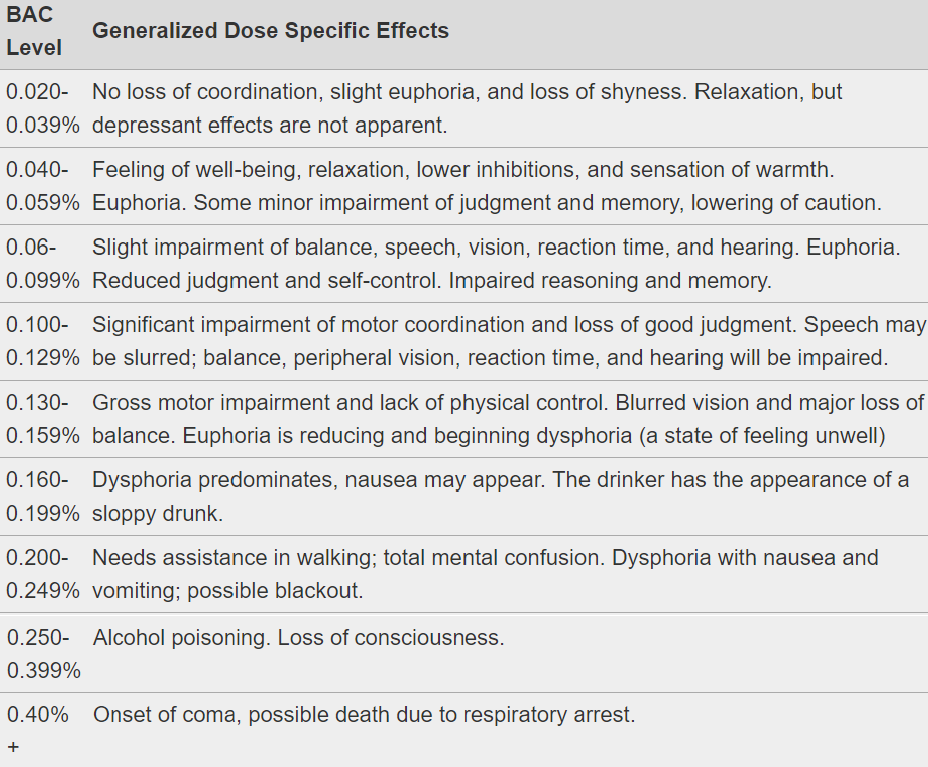Blood/Breath Alcohol Concentration (BAC) is the amount of alcohol in the bloodstream or on one’s breath. BAC is expressed as the weight of ethanol, in grams, in 100 milliliters of blood, or 210 liters of breath. BAC can be measured by breath, blood, or urine tests.
The National Road Traffic Act (NRA) differentiates between normal drivers and professional drivers (those drivers who hold professional driving permits).
- Normal drivers – the concentration of alcohol in any blood specimen must be less than 0, 05 gram per 100 milliliters. The concentration of alcohol in any specimen of breath exhaled must be less than 0, 24 milligrams per 1 000 milliliters.
- Professional driver, less than 0, 02 gram per 100 milliliters. The concentration of alcohol in any specimen of breath exhaled must be less than 0, 10 milligrams per 1 000
The number of drinks consumed is a very poor measure of intoxication largely because of variation in physiology and individual alcohol tolerance.
Variation exists with respect to:
- Body weight
- Sex
- Body fat percentage, even between genders
Neither BAC, nor the number of drinks consumed, are necessarily accurate indicators of the level of impairment. Tolerance to alcohol also varies from one person to another, and can be affected by such factors as genetics, adaptation to chronic alcohol use, and synergistic effects of drugs.


